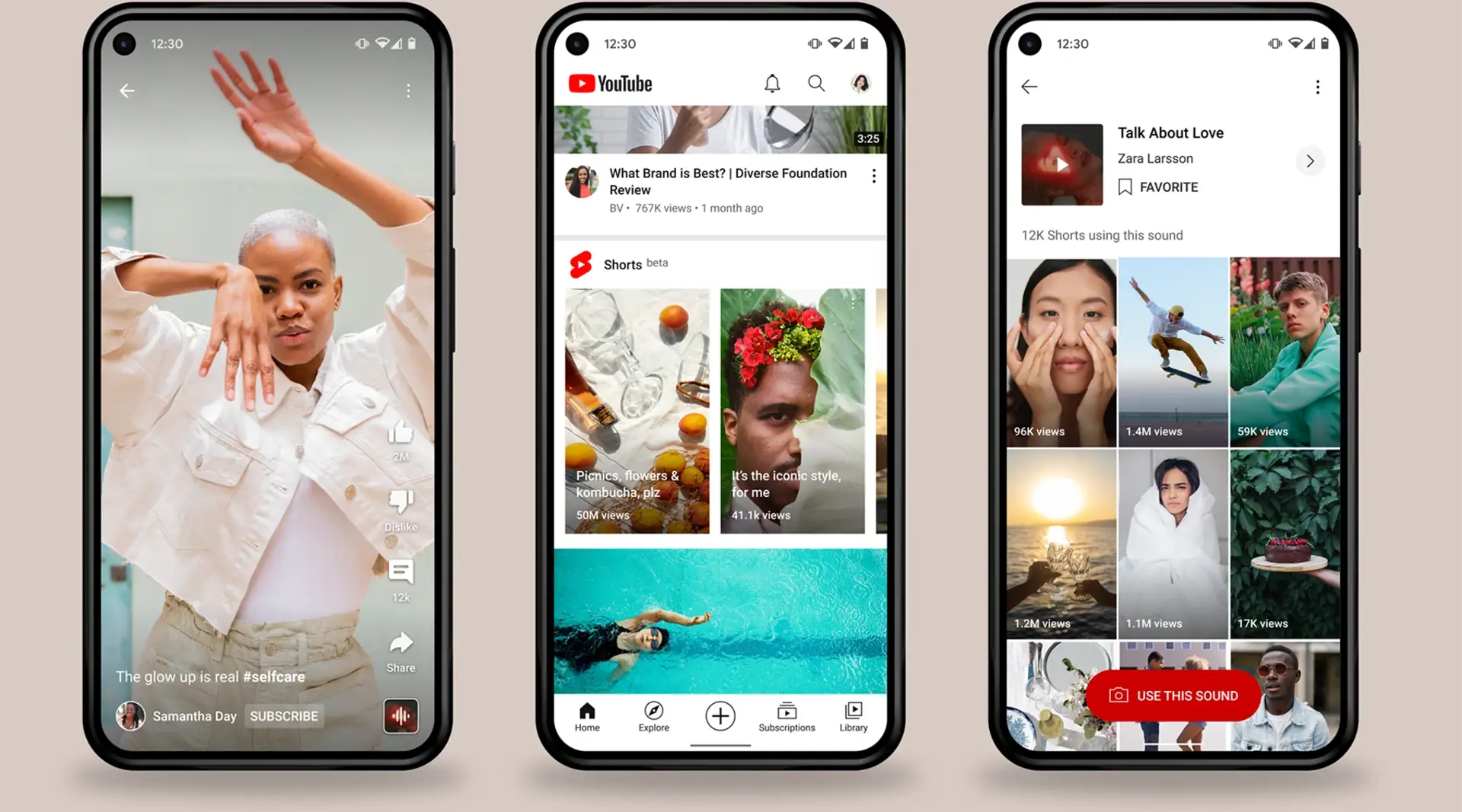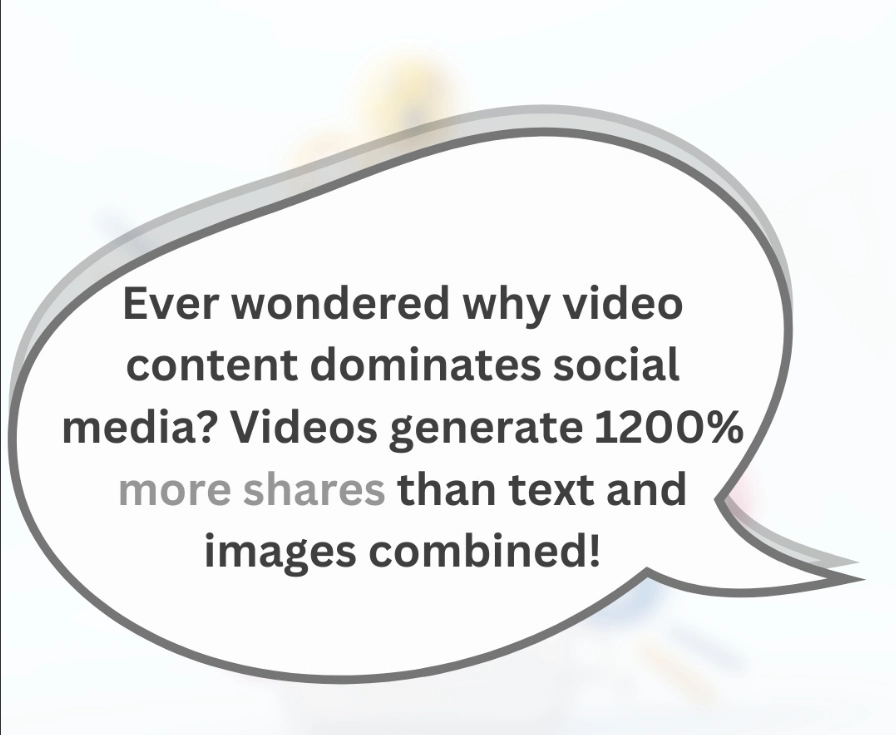6 Ways to Boost Social Media Engagement for More Sales

Affiliate marketing thrives on engagement. If people aren’t liking, commenting, or sharing, they’re not clicking your links. And if they’re not clicking, they’re definitely not buying.
Social media is more than just a place to post links. It’s where trust is built. The more people interact with your content, the more they see you as someone worth listening to. That trust translates into conversions—higher engagement means more sales.
A strong social presence does more than drive traffic. It creates a connection. People don’t buy from faceless brands; they buy from those they relate to. If your audience sees you as a real person, not just someone pushing products, they’ll be far more likely to take action.
But engagement doesn’t happen by accident. You can’t just post and hope for the best. You need a strategy—one that keeps people interested, encourages conversations, and naturally leads to clicks.
In this guide, I am going to walk you through ways to boost social media engagement for more affiliate sales.
Key Takeaways
- Higher engagement increases visibility, builds trust, and leads to more affiliate sales.
- Using eye-catching visuals, compelling captions, and clear calls to action helps capture audience interest.
- Posting when your audience is most active ensures maximum reach and interaction.
- Encouraging interaction through polls, Q&A sessions, contests, and giveaways boosts engagement.
- Leveraging videos and live streams helps create a personal connection and improves affiliate promotions.
- Collaborating with influencers and niche communities expands your reach and credibility.
- Tracking engagement metrics and refining your strategy based on data helps improve results over time.
Understanding Social Media Engagement
A few years ago, I helped a friend promote a fitness product on Instagram. He had great content—solid tips, high-quality videos—but barely any sales. His posts looked good but weren’t getting much engagement.
So, we changed the approach. Instead of just posting product shots, he started asking questions, running polls, and responding to every comment he gets.
After a few weeks, people started talking, sharing, and saving his posts. As time went by, his reach exploded, and so did his affiliate sales. That’s the power of engagement.
Engagement is how people interact with your content. It includes likes, comments, shares, saves, clicks, and even DMs. The more engagement a post gets, the more platforms push it to a wider audience.
What Counts as Engagement?
Every like, comment, share, save, and click tells the algorithm your content matters. The more people interact, the more it spreads. It’s a snowball effect—more engagement leads to more visibility, which leads to even more engagement.
Not all engagement is the same—shares and saves are gold because they tell platforms your content is valuable. Likes are nice but weak, while comments are better, especially long ones, since the algorithm favors meaningful conversations.
How Engagement Affects Organic Reach
Social media platforms want people to stay engaged. The longer users stick around, the more ads they see. That’s why the algorithm prioritizes content that sparks interaction.
If your post gets quick engagement, platforms push it to more people. If it flops early, it gets buried. This is why timing, content quality, and audience connection matter.
If you want better reach, encourage interaction. Ask questions, spark debates, and create content worth sharing. Engagement fuels visibility—and visibility fuels affiliate sales.

Struggling to Keep Up with Social Media? Stop juggling multiple platforms. SocialPilot makes scheduling, publishing, and managing content effortless. Plan posts in advance, and analyze performance—all in one place.
Ways to Boost Social Media Engagement for More Affiliate Sales
Now, without wasting much time, let’s break down how to make that happen.
1. Optimizing Your Content for Engagement
Posting content isn’t enough. If people scroll past without engaging, your affiliate sales will suffer. As I mentioned above, social media rewards content that sparks reactions—likes, comments, shares, and saves. The more engagement you get, the more platforms push your posts to a larger audience.
So, what makes people stop and interact? It starts with visuals. Eye-catching images and videos command attention in a crowded feed. A well-designed post stands out instantly, making people curious enough to read what you have to say.
But a great visual means nothing without a strong headline. A dull or vague title gets ignored. You need something that makes people pause, whether it’s a bold statement, a question, or a surprising fact. If your headline doesn’t create curiosity, the rest of your content won’t even matter.
Once you’ve got their attention, your caption has to hold it. People don’t want robotic text or generic promotions. They connect with stories, humor, and personality. Write like you’re talking to a friend, not making a sales pitch. Ask questions, use emotions, and make them feel involved.
Trends also play a big role in engagement. Whether it’s a viral meme, a trending challenge, or a hot topic, tapping into what people are already talking about can boost your reach. But don’t force it—find ways to tie trends naturally into your niche.
And finally, encourage action. If you want comments, ask for them. If you want shares, give people a reason to spread your post. A simple “Tag a friend who needs this” or “Drop an emoji if you agree” can work wonders.
It’s not about posting more—it’s about posting better. If your content grabs attention, sparks conversation, and makes people want to interact, you’ll see more clicks, traffic, and affiliate sales.
2. Get People Involved with Interactive Strategies
Social media isn’t a spectator sport. If you want engagement, you have to start conversations. The easiest way is to make it fun. Here are a few ways to do it.
Polls, Quizzes & Q&A Sessions
People love sharing opinions. A simple poll—“Which product feature matters most?”—can spark tons of engagement. Polls on Twitter (X) get 30% more engagement than regular tweets. Instagram Stories polls also see an average 15-20% response rate from followers.
Quizzes are even better. Everyone wants to know which gadget fits their lifestyle or what type of traveler they are. 96% of users who start a BuzzFeed-style quiz finish it. That’s powerful engagement that keeps people on your page longer.
Q&A sessions take it further. Go live, answer real questions, and connect directly with your audience. Live videos generate 6x more interactions than standard video posts. When people feel heard, they stick around.
Also, live videos generate 600% more facebook interactions.
b) Giveaways & Contests That Actually Work
A giveaway isn’t just about free stuff. It’s about getting people involved. “Tag a friend” or “comment your favorite product” drives organic reach without begging for likes.
Contests also work effectively. Let people share their stories, submit photos, or vote for a winner. The more invested they are, the more likely they’ll check out your affiliate links.
c) Engage in Comments & DMs Like a Real Person
Dropping a post and disappearing won’t work. Reply to comments. Start conversations. If someone asks a question, answer it like you’re talking to a friend.
DMs work the same way. No one wants a generic sales pitch. Be helpful. Offer real recommendations. People trust genuine interactions, not automated messages.
The goal is to make people feel part of something. When they do, they’re way more likely to buy.
3. Posting at the Right Time
You can create great content, but if no one sees it, it won’t make an impact. Timing matters. Post when your audience is active, not just when it’s convenient for you.
Figure Out When Your Audience Is Online
Not everyone scrolls at the same time. Some check social media first thing in the morning, while others browse during lunch or late at night. Your goal is to find out when your followers are most active.
But knowing the best time to post is one thing—actually posting at that time is another. You can’t always be online at the right moment. That’s why I recommend SocialPilot. It schedules your posts to go live when engagement is highest, so you never miss an opportunity. Less stress, better results.
Start by looking at your own habits—when do you check social media? Chances are, your audience has similar patterns. But don’t rely on guesswork. Social media analytics provide clear data on when your posts get the most engagement.
For example, Facebook Insights shows when your followers are online, and X analytics reveal when your tweets get the most views. Using this data helps you post at the right time, increasing visibility and engagement.
Use Analytics to Optimize Your Posting Schedule
Every major platform—Instagram, Facebook, X, TikTok—offers free insights on audience activity. Check your account’s analytics to pinpoint peak engagement times.
Once you have the data, experiment with different posting schedules. Your audience might engage more on weekday mornings, or maybe evenings work better. Test, adjust, and refine your strategy based on real results.
And don’t just post and disappear. Engagement happens in real time. Stick around, respond to comments, and keep the conversation going. That’s how you build relationships and drive sales.
4. Using Video Content & Live Streams
Social media moves fast. People scroll past text and images without a second thought. But video? That stops them. It grabs attention, builds trust, and keeps people watching.

The Power of Video for Engagement
People scroll past text, but they stop for videos. It’s visual, quick, and easier to digest than a long post. A solid video hooks viewers in seconds. Studies show that social videos generate 1200% more shares than text and images combined.

Short-form content—like Reels, TikToks, and YouTube Shorts—is perfect. It’s fast, engaging, and algorithm-friendly. Videos under 60 seconds have a 250% higher engagement rate than longer ones. Show the product in action, highlight key benefits, and keep it natural.
No need for fancy equipment. A smartphone and decent lighting are enough. Polished content is nice, but authenticity wins every time. 82% of consumers prefer live or unedited videos from brands over highly produced ads.
Live Streams: Selling in Real Time
Live video takes things further. It’s raw, interactive, and people love the real-time experience.
The key? Make it about connection, not just sales. Answer questions, give live demos, and share personal experiences. Let people see the product in action before they buy.
Platforms like Instagram Live, TikTok Live, and YouTube Live make it easy. Drop an affiliate link in the comments, pin it, and let viewers take action on the spot.
Keep It Fun & Real
People don’t show up for a sales pitch. They come for the energy, entertainment, and realness. Keep the vibe light, crack a joke, and be yourself.
The more engaged they are, the longer they stay—and the more likely they click and buy.
5. Collaborating with Influencers & Communities
Want more eyes on your content? Then stop trying to do it all alone. The fastest way to grow is by tapping into audiences that already exist.
Influencers and online communities are packed with people who trust recommendations from the right voices. When you collaborate with them, you skip the struggle of building an audience from scratch. You get instant credibility, more engagement, and—if done right—more sales.
Work With Influencers Who Actually Convert
Not all influencers are worth your time. Big follower counts don’t mean much if their audience isn’t engaged. Look for influencers who:
- Regularly interact with their followers.
- Have a history of promoting products that actually sell.
- Align with your niche and brand values.
Micro-influencers (10K-100K followers) often drive better results than massive accounts. Their audiences trust them more because they feel like real people, not celebrities. Plus, they charge way less.
When reaching out, don’t make it all about you. Show them how your product benefits their audience. Offer a win-win deal—commission-based partnerships work great for affiliate sales.
Be Active in the Right Communities
Your audience is already hanging out somewhere online. It might be a Facebook group, a Reddit thread, or a Discord server. Find these spaces and become part of the conversation.
But don’t just drop links and expect results. People hate that. Instead:
- Answer questions genuinely.
- Share insights that help the community.
- Mention your product naturally when it makes sense.
This builds trust. Over time, people will start checking out your content and clicking your links—without you needing to shove promotions in their face.
Make It Easy for Others to Share Your Content
The best collaborations happen when others promote you without being asked. Create content that’s easy to share:
- Engaging short-form videos for Instagram and TikTok.
- Twitter threads that spark discussions.
- Valuable posts in groups that members want to reshare.
The more shareable your content, the less effort you need to put into promotion. People will do it for you.
Recommended Reading: 5 Easy Ways to Create Shareable Affiliate Marketing Content
Build Relationships, Not Just One-Time Deals
The best partnerships aren’t one-offs. They grow over time. Keep in touch with influencers and community leaders. Support their content, engage with their posts, and be part of their world.
When you focus on real relationships, people promote your content because they want to—not just because they’re paid to. That’s when the real magic happens.
6. Analyzing & Improving Engagement Strategies
Tracking engagement isn’t optional. If you don’t know what’s working, you’re wasting time and missing potential affiliate sales.
Why Tracking Engagement Matters
Engagement metrics—likes, shares, comments, clicks, and watch time—show whether your content connects with your audience. Without this data, you’re just guessing.
Would you run an ad campaign without checking conversions? Probably not. Social media works the same way. If you’re posting without analyzing results, you might be putting effort into content that isn’t driving sales.
Key Engagement Metrics to Track
Most platforms provide insights, but a few numbers matter most for affiliate marketing:
- Click-through rate (CTR): Shows how many people click your affiliate links.
- Engagement rate: Measures likes, shares, and comments—proof your content is getting attention.
- Watch time (for videos): The longer people watch, the more interested they are.
- Conversion rate: Tracks how many clicks lead to actual sales.
If these numbers are low, it’s time to adjust your content.
How to Use Data to Improve Engagement
Numbers don’t mean much unless you act on them. Here’s how to use analytics to improve engagement:
- Find What Works: Check your top-performing posts. Do they have a strong hook? Are they a certain format (video, carousel, text post)? Post more of what gets results.
- Fix What’s Underperforming: If some posts flop, figure out why. Maybe the visuals aren’t interesting, the caption doesn’t grab attention, or the topic isn’t relevant.
- Test New Approaches: Change one thing at a time and see what happens. Try different headlines, posting times, or content types. Even small tweaks can make a big difference.
- Pay Attention to Comments and Messages: Your audience tells you what they want. If people ask the same questions or react strongly to a certain topic, use that to guide future content.
- Stay Updated on Platform Changes: Social platforms update their algorithms all the time. If engagement drops, it might not be your fault—it could be a shift in how content is ranked. Keep an eye on trends and adapt.
Make Engagement Work for You
Tracking engagement isn’t about collecting numbers. It’s about understanding what drives action and using that knowledge to grow your affiliate sales. Pay attention, adjust when needed, and keep improving.
Conclusion
Social media engagement goes beyond likes and shares. It builds trust, creates connections, and drives real affiliate sales. If you want consistent results, you need a strategy—one that focuses on high-quality content, audience interaction, and data-driven improvements.
But let’s be honest—managing all this across multiple platforms can be overwhelming. That’s where SocialPilot comes in.
With SocialPilot, you can:
- Schedule posts in advance and stay consistent.
- Analyze engagement data to see what’s working.
- Manage all your social media accounts from one place.
Stop guessing what works and start making smarter, data-backed decisions. Try SocialPilot today and take your social media engagement to the next level.
Frequently Asked Questions
Why is social media engagement important for affiliate marketing?
Engagement builds trust. The more people interact with your content, the more likely they are to click your affiliate links and buy. A highly engaged audience is also more likely to share your content, which expands your reach and brings in new potential buyers. Without engagement, your posts become background noise.
What are the best types of content to boost engagement?
Videos, carousels, and interactive content like polls and quizzes tend to perform best. People want content that feels personal and sparks conversation. Quick tips, behind-the-scenes content, and personal stories also encourage more likes and shares. If your posts feel robotic or salesy, people will scroll past them.
How often should I post to keep engagement high?
Consistency matters more than frequency. Posting three to five times a week is a good rule, but it depends on your platform and audience. Quality beats quantity every time. If you post too much without adding value, your audience may tune out. It’s better to post less often with high-quality content than to flood feeds with forgettable posts.
How do I track my engagement performance?
The only way to know what’s working is to track your results. Social media platforms provide analytics, but tools like SocialPilot give deeper insights into likes, shares, comments, and clicks across all your accounts. Checking these numbers helps you see which posts perform best so you can adjust your strategy.
What are some quick ways to improve engagement?
Ask questions in your posts to start conversations. Use storytelling to make your content more relatable. Engage with comments and DMs to build real connections. Running giveaways or contests can spark interest and boost interactions. Posting when your audience is most active also helps, since timing affects visibility.
How can SocialPilot help improve engagement?
SocialPilot makes social media marketing easier by helping you schedule posts, track performance, and manage multiple platforms in one place. It allows you to stay consistent, analyze engagement, and optimize your content for better results. Instead of guessing what works, you’ll have data to back up every decision.






